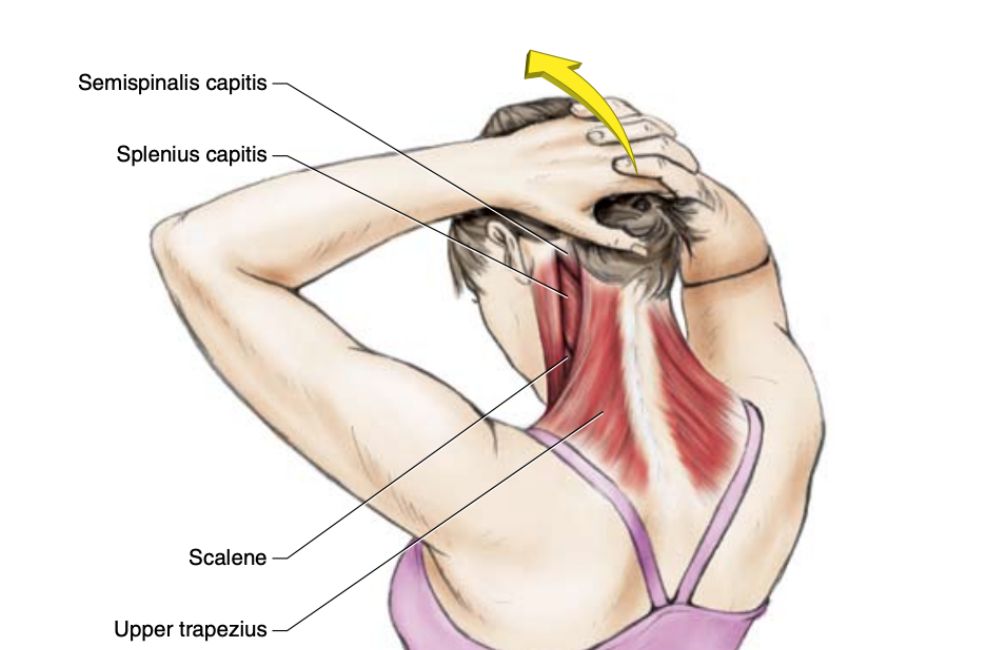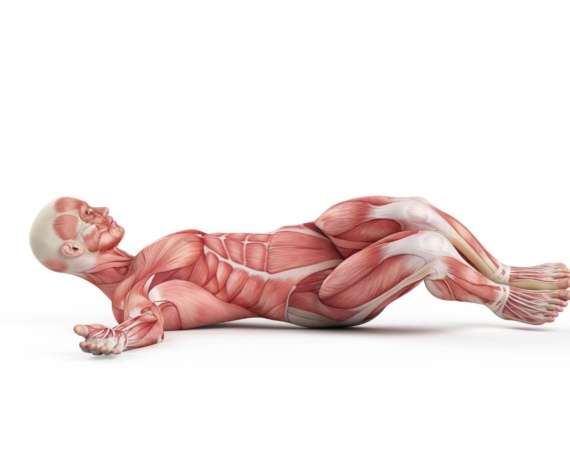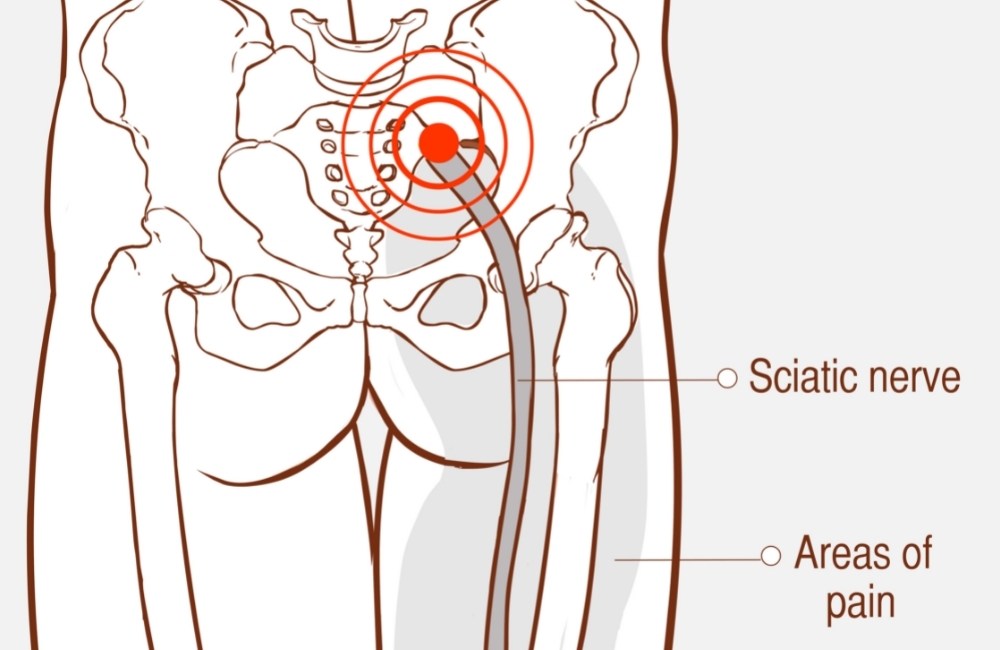
Struggling to walk, sit, or even stand? Sciatica could be the culprit.
Sharp pain shooting down your leg, making even simple tasks like walking or sitting a battle? You might be experiencing sciatica, a condition caused by irritation of the sciatic nerve.
This intense pain can disrupt your daily life, leaving you frustrated and searching for answers.
If this scenario sounds familiar, you’re not alone. Back pain is incredibly common, and sciatica is a specific type of pain that affects millions.
But fear not! This article will give you a clear picture of sciatica and, most importantly, equip you with some of the best exercises specifically designed to target and potentially alleviate sciatic nerve pain.
You’ll also like:
- 8 Restorative Stretches for Your Shoulders, Neck, and Lower Back
- 30+ Muscle Diagrams That’ll Teach You How To Stretch Every Body Part
Sciatica Explained
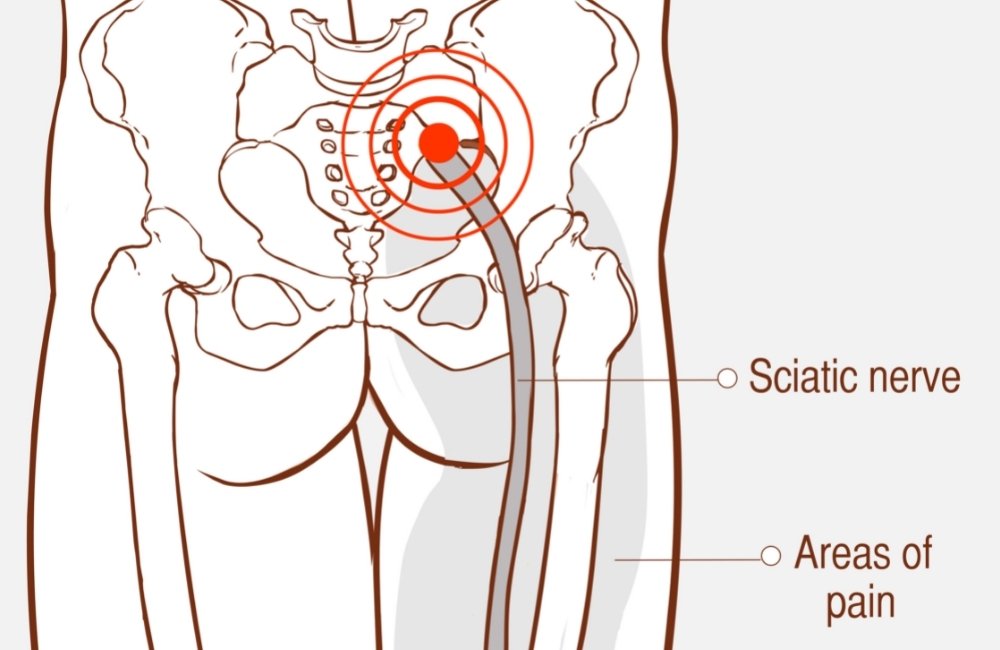
As was mentioned in the introduction, sciatica refers to an irritation of the sciatic nerve (2).
The sciatic nerve is the longest nerve found in the human body. It begins in the lower portion of the spine and runs all the way down to the toes, branching off many times along the way.
When any portion of the sciatic nerve is “impinged” or “pinched,” a patient may experience a variety of symptoms.
Symptoms of Sciatica
As is the case with any type of nerve impingement, sciatica often results in burning, tingling, and numbness in the areas innervated by the nerve.
However, one of the classic and most problematic symptoms of sciatica is a condition known as drop foot.
Drop foot is when the muscles that pull the toes upward no longer function properly due to sciatic nerve impingement.
As a result, patients with a drop foot will often drag their toes as they walk. In order to avoid falling, they often have to use a supportive ankle brace.
Causes of Sciatica
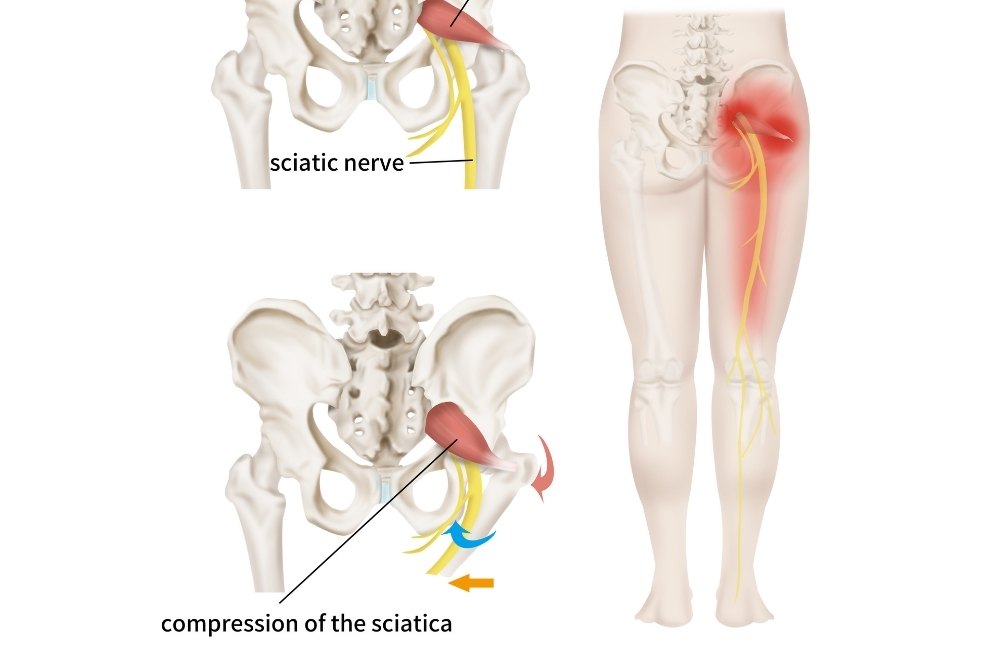
Sciatica can result from a variety of causes.
In rare cases, some medications have been reported to affect the sciatic nerve.
However, the issue is much more commonly caused by tight muscles, bulging spinal discs, or other problems that impede the nerve.
Treatments for Sciatica
Over the years, researchers have investigated various potential treatments for sciatica. Some medications may help, and in some cases, doctors will recommend that patients undergo surgery to correct the issue.
Fortunately, however, many patients can make a full recovery from sciatica by implementing a few key stretches and exercises.
Top 5 Exercises for Sciatica
In this section, we’ll dive into some of the best movements that can quickly and effectively address your sciatica symptoms.
Unless otherwise indicated, you should perform each of these stretches once per day, completing 4 repetitions of each stretch, and holding for 30 seconds. As far as intensity is concerned, you should aim to achieve a sensation of “mild discomfort” with every stretch.
1. 90/90 Hip Stretch
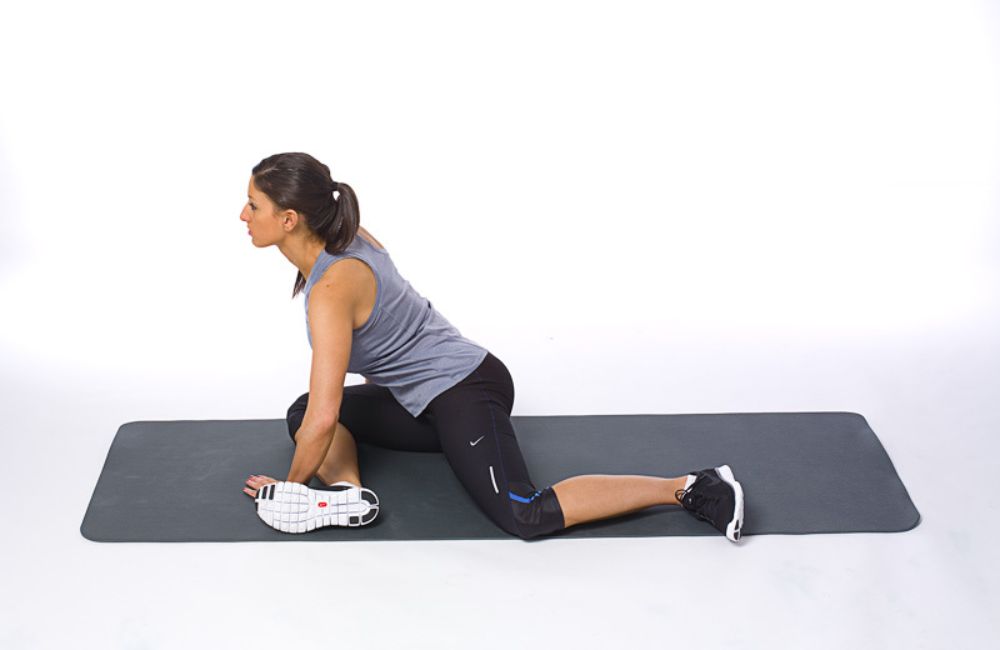
The 90/90 stretch is one of the key movements that can address piriformis tightness. Because of the piriformis’s position along the sciatic nerve’s pathway, it can often cause sciatica when it is overly tight.
How to Perform
- Begin by kneeling on a soft, padded surface.
- Place the outside of your right ankle on the ground, slightly in front of your left knee.
- Next, slide your left knee backward as far as you can.
- As you continue to progress the stretch, you should start to feel a deep pull in your right buttocks/piriformis muscle.
- Hold this stretch for 30 seconds, and complete 4 reps per side, for one session per day.
2. Glute Bridges
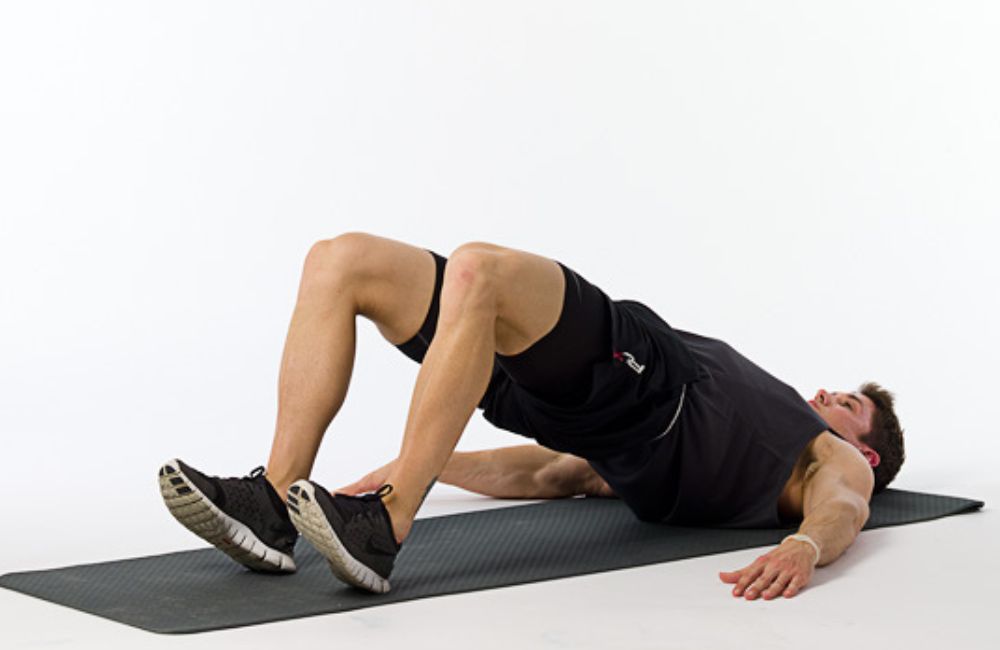
One of the big problems facing back pain sufferers is a lack of muscle strength and stability in the low back and hips. Bridges are a simple, yet effective way to improve glute and low back strength.
How to Perform
- Lie flat on your back, with your feet flat on the floor and your knees bent.
- Press through your heels in order to raise your buttocks off the ground.
- Hold this position for 10 seconds, then return to the ground
- Repeat for 3 sets of 10 reps, once per day.
3. Swimmer Kicks
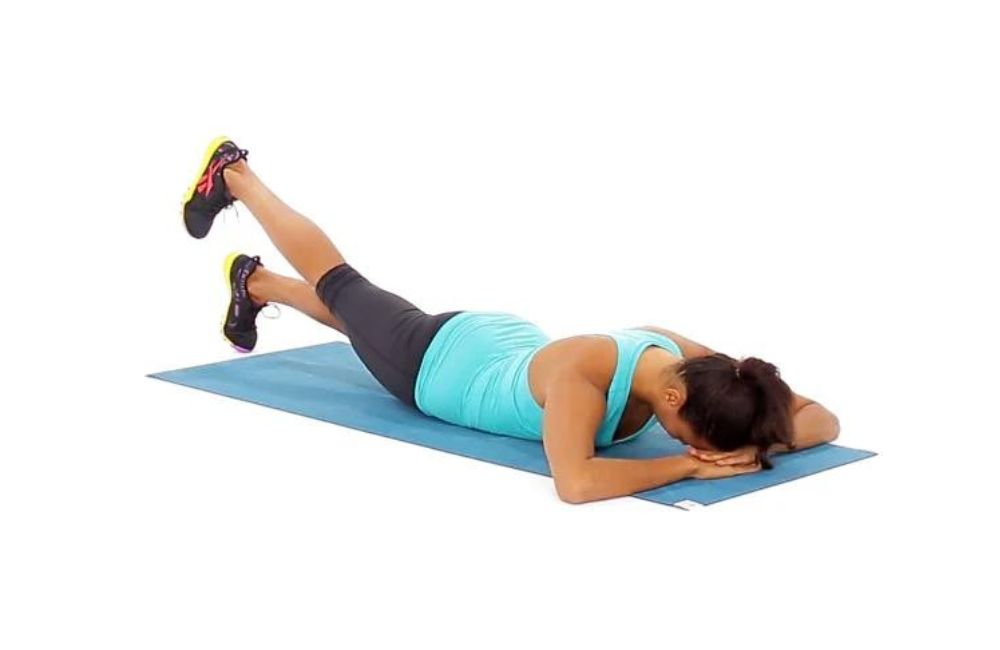
Swimmers tend to have extremely strong core musculature. Therefore, mimicking some of their movements is a great way to increase core stability.
Be careful though: this movement requires some amount of spinal extension, which can be uncomfortable for some people. If you need to modify the exercise, place a pillow underneath your stomach and hips.
How to Perform
- Lie flat on your stomach with your hands underneath your forehead.
- Slowly, lift your right leg off of the ground, keeping your knee straight.
- Hold for 3 seconds, then return your right leg to the ground and lift your left leg in the air.
- Hold for 3 seconds, then return your left leg to the ground.
- Repeat in this alternating pattern for 10 reps per leg, for 3 sets per session, one session per day.
4. Sciatic Nerve Flosses
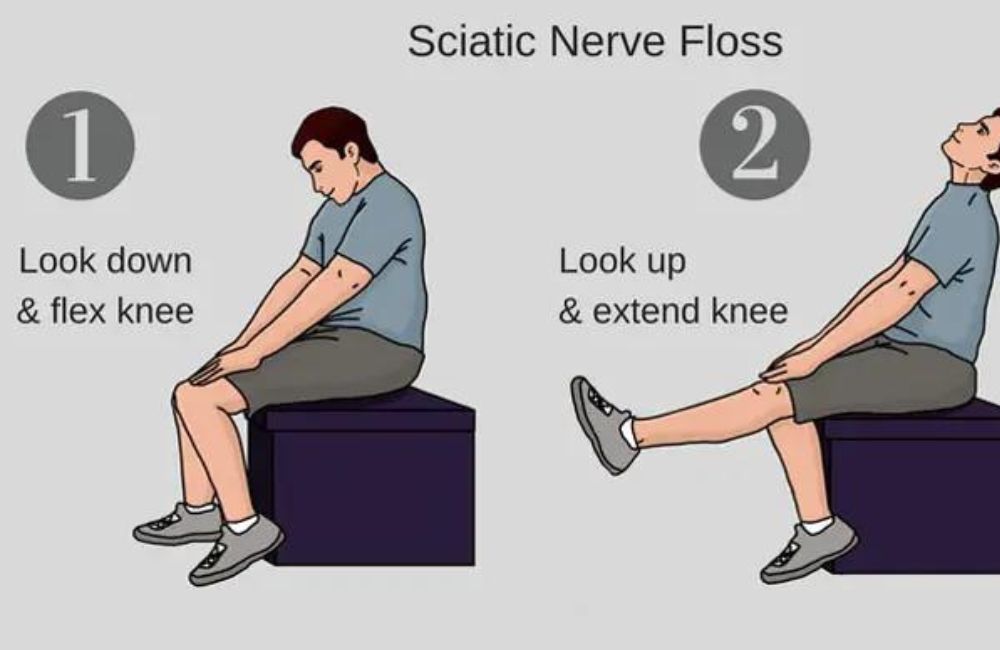
If you’re like most people, you probably ignore your dentist’s advice and rarely floss your teeth! However, flossing is a great way to keep both your teeth and your nerves healthy.
Nerve flossing essentially involves tensioning the nerve at one end, while loosening it at the other, then switching sides.
How to Perform
- Sit on a firm, stable surface.
- Slump forward, rounding your shoulders and bringing your chin to your chest.
- As you do this, bend the knee of the affected leg.
- Hold this position for 3 seconds, then reverse the motion by sitting up tall and looking at the ceiling as you straighten out your knee.
- After 3 seconds, return to the “slumped” position.
- Continue to repeat in this alternating pattern for 10 reps, 1 set, once or twice per day.
5. Dead Bugs

While “dead bugs” is perhaps the silliest name for an exercise, it’s one you need to have in your routine!
Dead bugs serve to increase core and spine stability greatly. This exercise is easy to perform and can be modified in a variety of ways as you get stronger and increase your stability.
How to Perform
- Lie flat on your back with your knees bent and your feet flat on the floor.
- Reach both of your hands toward the ceiling as you simultaneously lift both of your feet off the floor.
- At this point, both of your knees and both of your hands should be pointed directly upward. This is the starting position.
- Slowly, allow your left arm to fall backward until your left hand is about an inch off of the floor.
- At the same time, straighten out your right leg and lower it to about an inch off of the floor.
- Hold this position for three seconds, then return to the starting position.
- Repeat this movement on both sides for 3 sets of 10 reps, once per day.
Sciatica Exercise Precautions
Earlier in this article, I mentioned a few of the general issues that can cause sciatica. Some of these conditions are more serious than others, and they will limit you from safely completing these exercises.
If you are suffering from sciatica, it is always a good idea to receive a thorough diagnosis from a qualified medical professional. This way, you can be sure that you aren’t performing any movements that may make your condition worse.
Conclusion
Sciatica is a tricky, irritating condition. Luckily, most cases of sciatica can be addressed using exercise alone. If you have been dealing with sciatica and can’t take it anymore, see if this exercise routine is right for you!
Works Cited
- Wong, A., Karppinen, J., & Samartzis, D. (2017). Low back pain in older adults: risk factors, management options and future directions. Scoliosis and spinal disorders, 12, 14. https://doi.org/10.1186/s13013-017-0121-3
- Koes, B. W., van Tulder, M. W., & Peul, W. C. (2007). Diagnosis and treatment of sciatica. BMJ (Clinical research ed.), 334(7607), 1313–1317. https://doi.org/10.1136/bmj.39223.428495.BE

